N533PA. Boeing 747SP-21. c/n 21025-273.
Was also registered as: N143UA.
This was the fourth Boeing 747SP to be constructed. It was ordered on September 10, 1973 by Pan American as part of the airline's order for 10 aircraft. This order was later revised to reflect the airline's growing financial problems. The revised contract, now for 7 firm orders and 18 options, was signed on April 15, 1974. Rolled out at the Everett plant in Boeing's red-white-blue livery on October 08, 1975 it was powered by Pratt & Whitney JT9D-7A engines. Entered onto the United States Aircraft Register as N40135 she flew for the first time on November 03, 1975 to join the flight test program. Retained as a 'standby' aircraft it was held in reserve to be used if necessary to maintain Boeing's flight test schedule. As everything was progressing well in terms of testing and certification so Boeing decided to use this aircraft on a 'World Tour' to show off the 747SPs performance capabilities. It was planned to visit 19 cities in 18 countries in a 30 day, 70,000 mile demonstration flight. Fitted with a complete Pan Am interior it departed Seattle on November 11, 1975 for New York. The following day it flew the first nonstop commercial flight from New York to Tokyo with 200 passengers on board in 13 hours 33 minutes, a distance of 7,015 miles. The actual tour visited 18 cities, taking 29 days to cover a distance of 72,152 miles with a total flight time of 140 hours 15 minutes. With the test and certification flying complete it was refurbished in preparation for handing over to Pan Am as its first Boeing 747SP. Reregistered as N533PA it was accepted on March 05, 1976 as 'Clipper Freedom'. This was one of the five names that had been chosen to reflect the spirit of the upcoming bicentennial celebrations. It was then ferried from Everett to Seattle - Tacoma where it was loaded with freight for its delivery flight to New York. This aircraft was once again called upon to demonstrate the types outstanding long range capabilities when Pan Am decided to try and beat the existing around-the-world record for a commercial aircraft, which then stood at 62 hours 27 minutes and 35 seconds set by a Flying Tiger Line Boeing 707-349C N322F 'Pole Cat' when it flew over both poles from November 15 - 17, 1965. Now named 'Clipper Liberty Bell' in honour of the upcoming American bicentennial celebrations, it departed New York's John F. Kennedy International Airport on May 01, 1976 under the command of Captain Walter Mulliken, Pan Am's Vice President and Chief Pilot with 98 paying passengers on board to enjoy the experience. They had paid $US2,912 for a seat in First Class while an economy class seat had cost them $US1,838. The route flown was New York (JFK Airport) - New Delhi (Indira Gandhi International Airport) - Tokyo (Haneda Airport) before arriving back at New York on May 03, 1976. The elapsed time from takeoff to landing was 46 hours 50 seconds covering a distance of 23,137 miles. The actual flight time as verified by the National Aeronautics Association was 39 hours 25 minutes and 53 seconds which beat the 707's record by 16 hours 24 minutes. Once again this aircraft was used in a record breaking flight. She was renamed 'Clipper New Horizons' on January 01, 1977 in preparation for the record breaking flight that would occur later that year to mark Pan Am's 50th Birthday with a flight around the world but this time over both North and South Pole. 'Flight 50' titles were applied to its upper fuselage to mark this event. One hundred and seventy-two passengers purchased tickets for this epic flight. The tickets sold for $US3,333 per person for a First Class seat and $US2,222 for an Economy Class seat. On October 28, 1977 'Clipper New Horizons' departed San Francisco for London via the North Pole - 50 years to the day that Pan American commenced services from Key West, Florida to Havana, Cuba. From London she flew to Cape Town before flying to Auckland Airport via the South Pole. The last sector was Auckland - San Francisco where it landed on October 30th. The elapsed time was 54 hours, 7 minutes and 12 seconds which beat another previous record set by a Flying Tiger Line aircraft for a similar flight over the Poles of 62 hours, 27 minutes and 35 seconds. 'Clipper New Horizons' had flown the 26,230 mile route in the actual flying time of 48 hours 3 minutes establishing six world records in the process. This aircraft holds the distinction of being the only four-engined passenger jet airliner to have flown around the world both at the equator and over the poles. Name changes became a regular occurrence for this aircraft. It was renamed 'Clipper Young America' on January 01, 1980, 'Clipper New Horizons' again by August 1981, 'Clipper San Francisco' by July 1983, 'Clipper New Horizons' again by January 1984 and 'Clipper Young America' again by April 1985. By September 1985 it had acquired the new Pan Am 'billboard' livery but retained the 'Flight 50' logo. In April 1985 Pan Am sold its entire Pacific Division (routes and aircraft) to United Airlines for $US 750,000,000 in an attempt to overcome its dire financial problems. Ownership of N533PA was transferred to United on February 11, 1986. Retaining its current registration it entered United service in an all-white livery with United titles and tail logo. It was reregistered as N143UA on March 1, 1986 and repainted in the United 'rainbow' livery with small company titles on the forward fuselage. It was sold to American Finance Group on July 25, 1989 and leased back to United. By September 1990 the aircraft had acquired the larger 'United' titles but retained the existing 'rainbow' livery. It was repurchased by United Air Lines Inc. on November 22, 1994. It was observed in this livery stored as Las Vegas on January 14, 1995. N143UA was sold to Aviation Sales, Ardmore, Oklahoma on August 01, 1995 and ferried to Ardmore, Oklahoma on August 8th and officially retired by United. It was cancelled from the United States Aircraft Register on December 01, 1995. Stored in the basic United livery she remained intact for some time. However by December 1997 she had been cut for scrap and its remains trucked out. N143UA was the first Boeing 747SP to be completely scrapped having flown 78,941 hours with 10,733 cycles. |
 |
N40135. Boeing - in the standard Boeing livery at Paine Field, November 1975. (R. N. Smith Collection Copyright Image 4635-126.) |
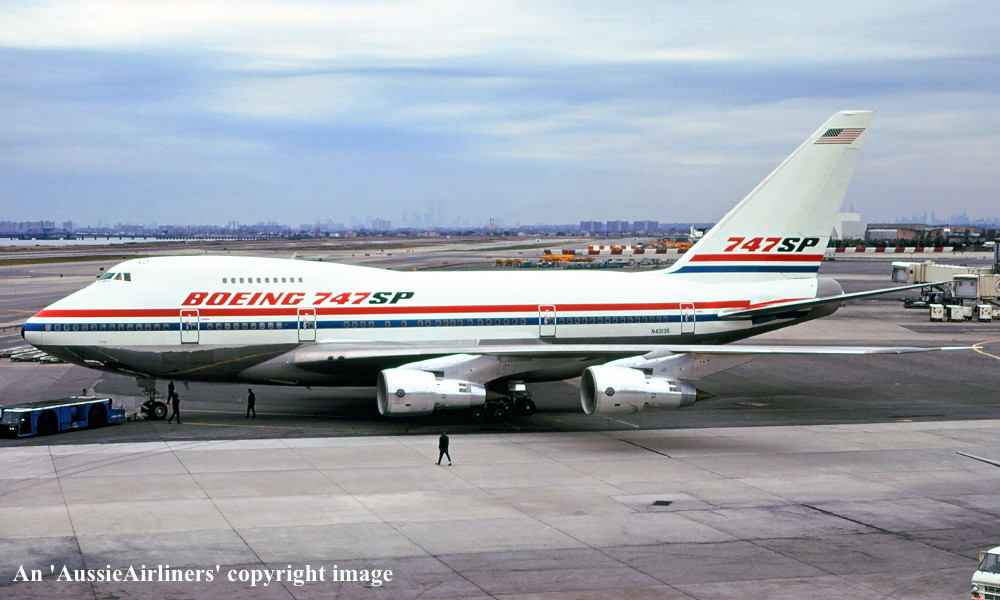 |
N40135. Boeing - in the standard Boeing livery at New York JFK Airport, November 12, 1975. (R. N. Smith Collection Copyright Image 4635-462.) |
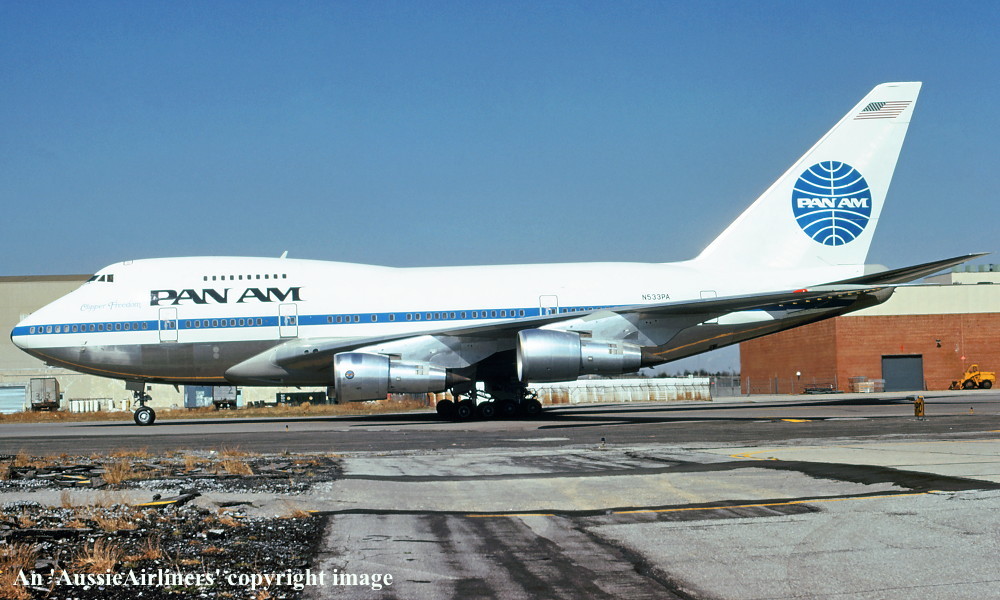 |
N533PA. Pan Am - 'Clipper Freedom' in the standard livery at New York JFK Airport, April 1976. (R. N. Smith Collection Copyright Image 4635-273.) |
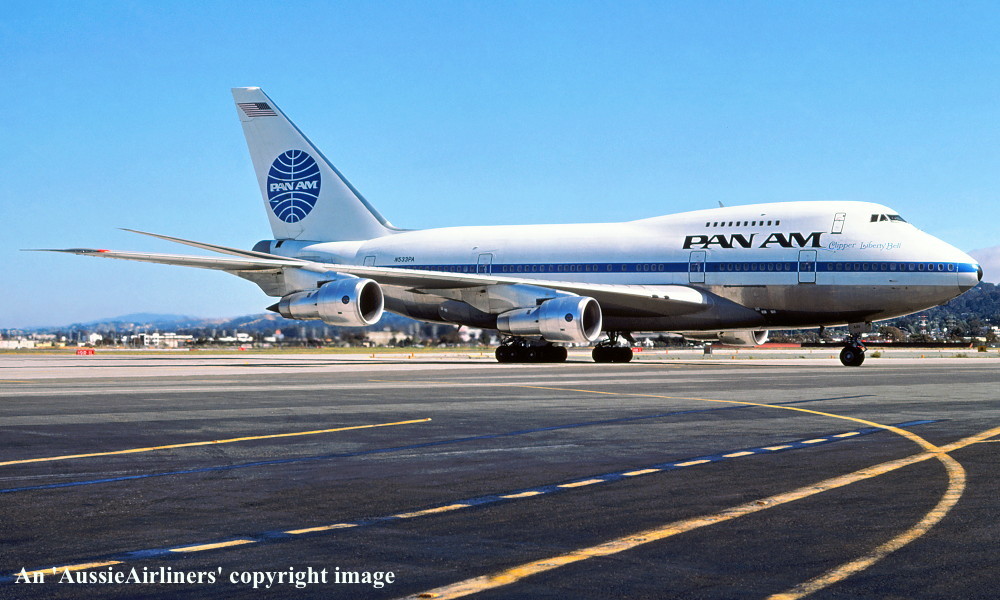 |
N533PA. Pan Am - 'Clipper Liberty Bell' in the standard livery at Boeing Field, June 1976. (R. N. Smith Collection Copyright Image 4635-312.) |
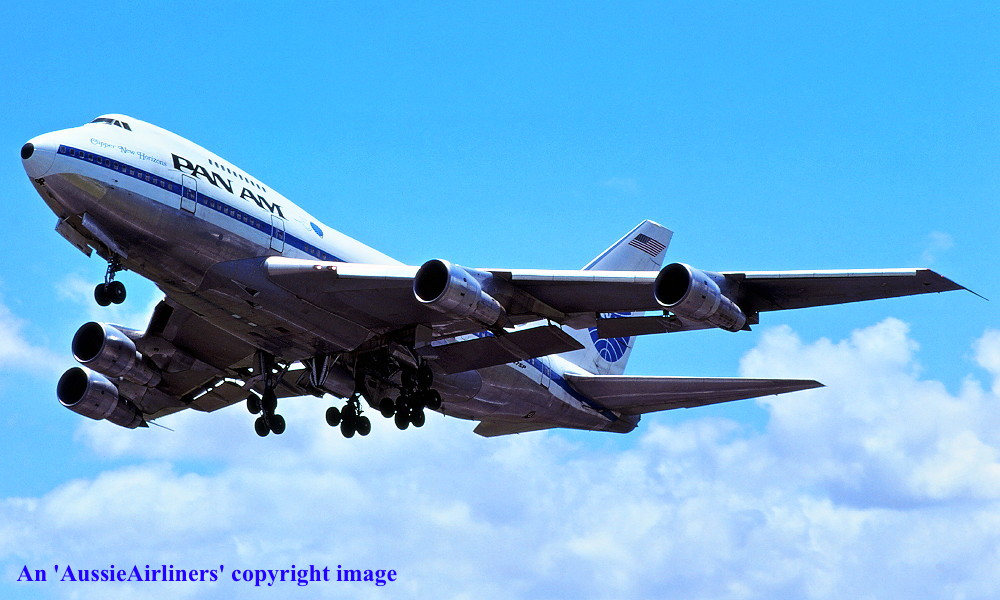 |
N533PA. Pan Am - 'Clipper New Horizons' in the standard livery at Sydney Kingsford Smith Airport, January 10, 1978. (R. N. Smith Copyright Image 4635-113.) |
 |
N533PA. Pan Am - 'Clipper New Horizons' in the standard livery at Sydney Kingsford Smith Airport, January 10, 1978. (R. N. Smith Copyright Image 4635-463.) |
 |
N533PA. Pan Am - 'Clipper New Horizons' in the standard livery at Los Angeles Airport, June 1979. (R. N. Smith Collection Copyright Image 4635-128.) |
 |
N533PA. Pan Am - 'Clipper New Horizons' in the standard livery at Sydney Kingsford Smith Airport, August 1979. (R. N. Smith Copyright Image 4635-127.) |
 |
N533PA. Pan Am - 'Clipper Young America' in the revised livery at Paris Charles de Gualle Airport, September 1985. (R. N. Smith Collection Copyright Image 4635-129.) |
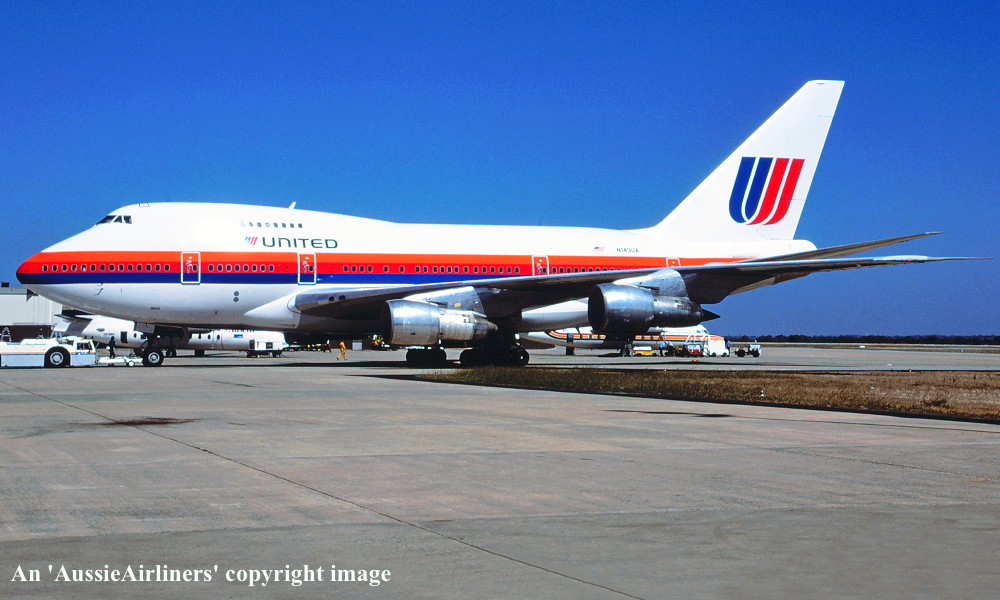 |
N143UA. United - in the standard livery at Melbourne Tullamarine Airport, March 1986. (R. N. Smith Collection Copyright Image 4635-552.) |
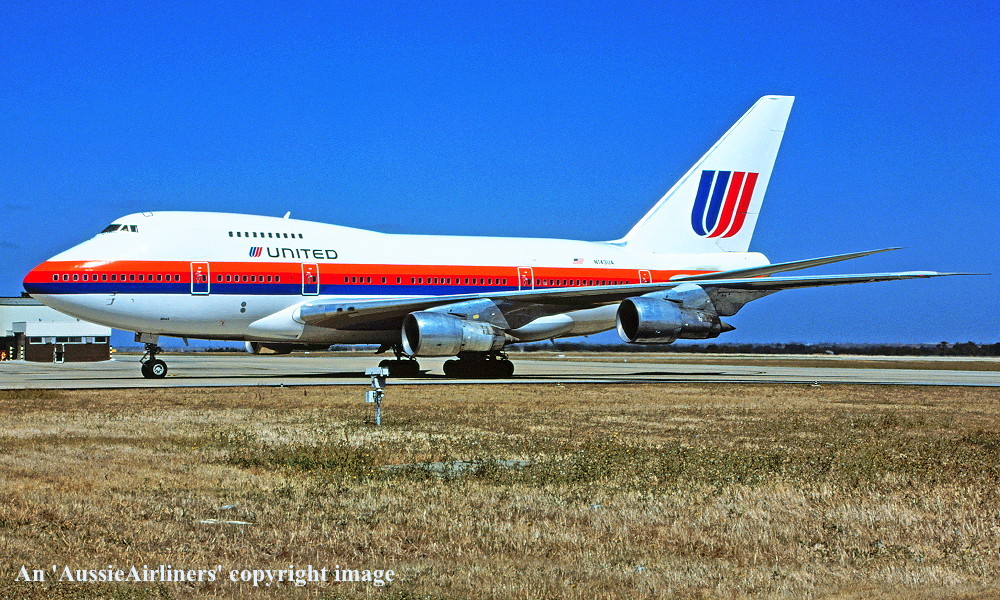 |
N143UA. United - in the standard livery at Melbourne Tullamarine Airport, May 1986. (R. N. Smith Collection Copyright Image 4635-117.) |